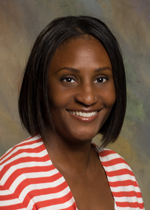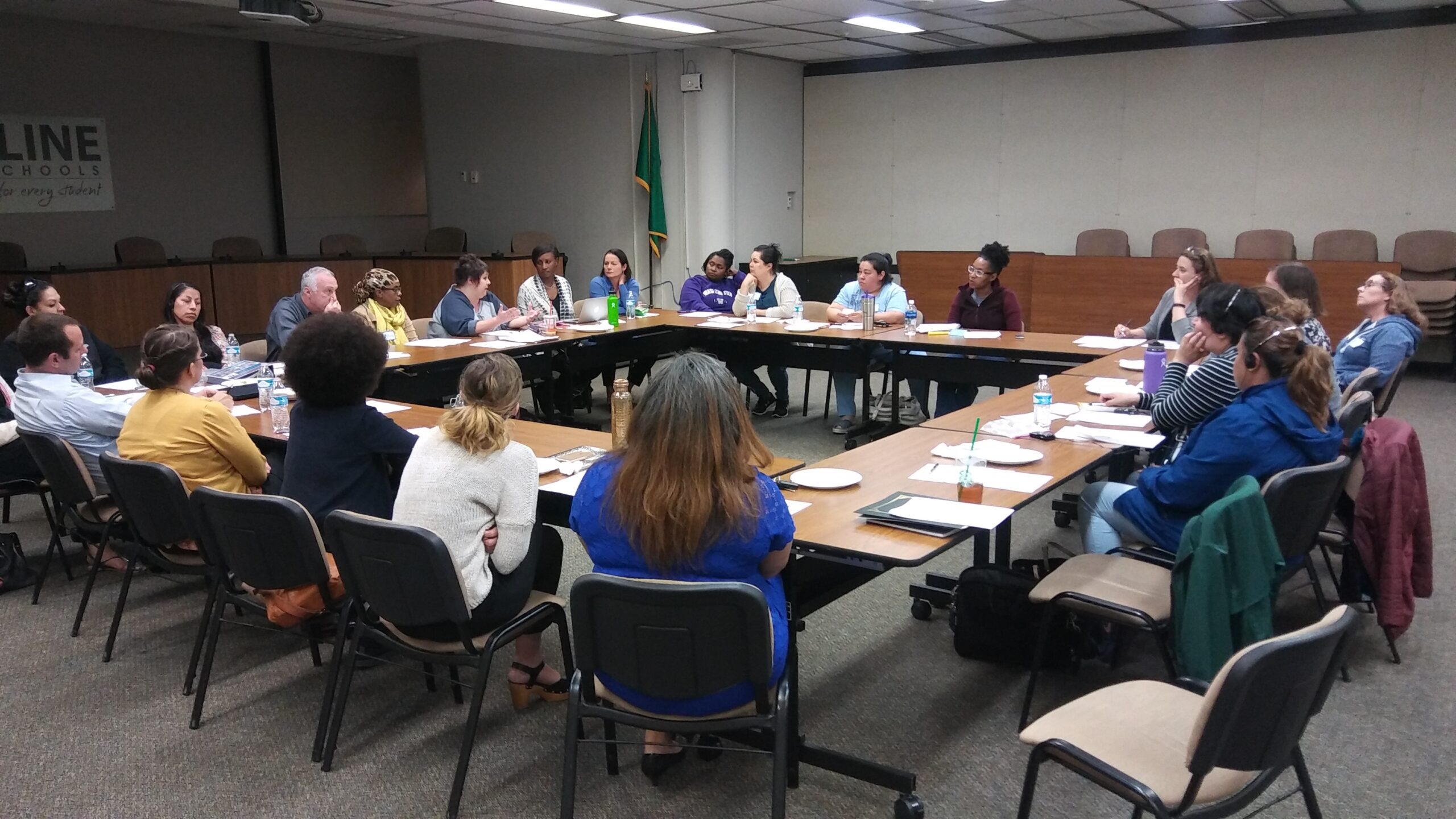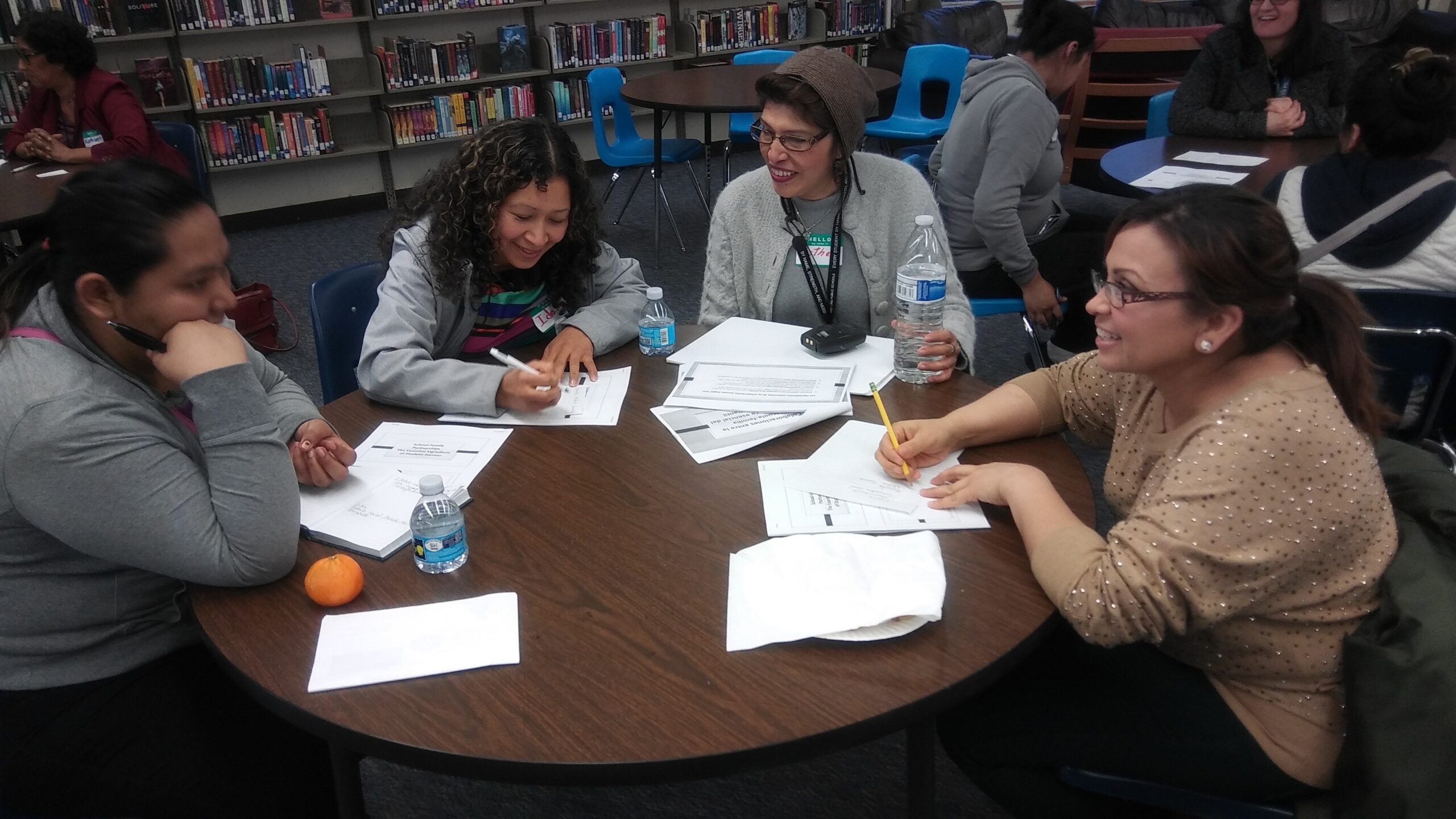
Interview with Kisa Hendrickson
Executive Director of Student Support & Family Engagement
Highline Public Schools (WA)
July 2017
How did you get into this work?
Public education is my second career. I previously worked in family law, but after volunteering at schools, I made a career switch. I had the opportunity to do an internship at Evergreen High School while in graduate school (MSW), and a position came open for Highline Public Schools for a Family Engagement Specialist, and the rest is history. While I knew I had a passion for ensuring ALL students have access to a quality educational experience, I had not known at the time, that a huge part of that, was ensuring that families were authentically engaged in the educational process. As my knowledge of family engagement increased, and also hearing from families about the experiences they were having in our schools that turned them off from building a relationship with the school, I have made this my life’s work. I see family engagement as an equity issue. Families that have access to information and school staff have better outcomes for their students. If we truly want to move the needle on student achievement, we need to ensure that ALL families have the opportunity to have a relationship with their children’s schools.
Tell us some basics about Highline Public Schools. How big is it and what are the demographics?
Highline Public Schools is a medium-sized school district just outside of Seattle. It includes 40 schools across five municipalities. Of its 20,000 students, 13% are in special education and nearly 70% receive Free and Reduced Meals. As far as the racial breakdown, we are 44% Hispanic, 24% White, 14% Black, 14% Asian, 8% Pacific Islander, 8% mixed race, and 1% Alaskan/Native American.
What about English Learners, immigrants, and refugees?
Yes, approximately 26% of our students are English Learners and there are over 100 languages spoken by families in our district! As you can imagine, having interpretation and translation services is very important so all families have access to information and opportunities. Our refugee populations are particularly diverse because we have two refugee resettlement agencies in our area – International Rescue Committee and Lutheran Community Services Northwest. The majority of our Black students, for example, are Somali.

Tell us a bit about your district’s key programs and strategies for engaging families.
First, I’ll start by telling you about our Superintendent’s Family Action Committee (FAC). This group includes approximately 20 parent representatives and meets quarterly with the Superintendent to have a consistent touch point to bring ideas and discuss concerns. The committee started four years ago and we keep the group flexible so it can be responsive to parents’ desires. The committee has also become our “go to committee” for getting parents’ input on all types of things. Any time we need to bounce an idea off of some parents, we go to them. It is particularly helpful that this group is diverse and we work hard to recruit family members from backgrounds that represent our community.
How do you handle this targeted recruitment to engage those who may have traditionally been less involved in schools?
Well, we do all the normal things like post the application on our website, push out notifications through our district app and social media, but more importantly, it’s about building relationships with community leaders. I will often show them the data and ask them if we can have a conversation about it. I show them the data, I sit back and do a lot of listening, and then offer to partner and support. I’m really not in the driver’s seat – they take the lead. Once I build relationships with community leaders and attend community events, more relationships develop from there. Sometimes I pick a particular community to focus my outreach efforts on for the year; for example, this school year it’s the Pacific Islander community. I specifically choose a community we’ve had a hard time engaging with.
Speaking of community engagement, I understand Highline also has a Community Partnerships Specialist?
Yes – she is crucial because we value strong community partnerships and cannot do this work alone! She serves as a liaison between community partners and schools, working to build, manage, and celebrate what we do together. The goal is to see that all schools have thriving partnerships that are deeply impactful for our students and families. In fact, many of our departments engage with community partners to achieve their goals and I’ll give you an example. Our Early Learning Department, which handles PreK to third grade, has a nine week academy for families with children aged birth to three. They work really closely with community partners and hold the academy at the nearby public housing complex. In this academy, they build up connections and information about early learning so that when these children come into our schools, they’re ready to go. Our Early Learning Department also uses community leaders to run groups with PreK families.
I understand Highline has a Parent University. Could you tell us about that?
Sure! We actually tried doing a Parent University about six years ago for our Spanish-speaking families, but things didn’t work out the way we had hoped when we got to the follow-up phase. We held off trying it again for a while, but last year we decided to give it another try. After some trial and error, we partnered with the Washington State Family & Community Engagement Trust and they have a really strong curriculum. We had 15 parents go through the program and they just recently graduated. We had parents from many different racial and ethnic backgrounds and we offered interpretation services if needed. Our Parent University was five weeks long and the sessions occurred in the evenings, so we provided dinner and child care. The parents who attended all have children in a particular service area, and we purposely held the sessions at their high school feeder so they could see where their children would eventually go. This was a great group of parents! They created bonds between each other and I’m going to work on bringing them into some of our work at the district level.
That’s wonderful! Could you talk about what steps you are taking to institutionalize your Parent University?
Yes, definitely. One of the most important things we did was require the presence of at least one school staff member from each of the elementary schools represented so they could be involved in the learning and discussions. In fact, we had some principals join us! We will soon replicate this model in another service area in our district and then continue on to the next one. We are also looking into technology we can use for those who can’t attend. Perhaps we can create modules and further replicate it that way.
Much of this work is about building relationships – relationships with families, with school-based staff, and so on. Are there other aspects of your programming that revolve around building relationships?
Yes, in fact we have a team of approximately 30 Bilingual Family Liaisons. The majority are Spanish-speakers, but we also have a couple of Vietnamese, Cambodian, and a few Somalis. About nine or 10 years ago, these folks were bilingual paraeducators, who were instructional staff working in the classrooms. When it was structured like that, there wasn’t any official time built in to do family engagement work, but in a way they were since they were building relationships with students and families. They had the language and cultural connections and easily built those relationships. So after a few years, we decided to split their time so now they are half bilingual paraeducators and half family liaisons and get paid out of general funding.
Very interesting! Would you say this model works?
It was an appropriate decision at the time we made it, but I’ll be honest – in my opinion, the model is spotty in effectiveness because of the time and capacity of the position. When the Bilingual Family Liaisons wear their paraeducators hat, they have normal teacher duty hours, and every school has a different schedule. Plus, as you know, most family engagement work occurs in the evenings, but those aren’t their hours. Sometimes we’re able to pay them on an extra service contract for outreach phone calls in the evenings, but that’s not a regular thing. In some schools, the principal has bought the other half so that the Bilingual Family Liaison can focus on family engagement full time and those situations have been pretty successful.
What is your role or your department’s role with the Bilingual Family Liaisons?
We don’t supervise them – the principals do. But we do provide them with professional development multiple times each year. For example, they come to the central office for training on family engagement principles and techniques, racial equity, bullying, college and career access, etc. It can be tricky because as you can imagine, the two hats they wear require two different skill sets.
I recall that your district has an Ombudsman. What does she do?
Yes, we have a District Ombudsman who works with families and schools to help resolve concerns, explain district policies and procedures, and ensure that families and schools are successfully partnering for student success. She also assists me with proactive family engagement efforts in our district.
You’ve talked a lot about how you build the capacity of parents to help them be more engaged, but how do you build the capacity of the educators in HPS to do this work? I’m thinking about the Dual-Capacity Framework.
This is probably the area that we are most lacking, but this is one of the main reasons we’re working with you all at IEL and are part of the Road Map Project! Our Ombudsman and I go out and do a basic “spiel” about family engagement fairly regularly. But it’s really just a short PowerPoint. Also, in 2011, we created a family engagement toolkit for schools, but it needs to be updated. It’s challenging because at the district level it’s just me and Isuzu, so we have not had the capacity to take this up a level. However, I will soon no longer be overseeing the PBIS (Positive Behavior Interventions and Support) team so that will free up some of my time and we look forward to implementing much of what we learned through the Road Map Project!
Can you share more about how Highline has been working with us at IEL and a bit about the Road Map Project?
Highline is one of seven school districts in the Seattle area participating in the Road Map Project, which is a community-wide effort aimed at improving education to drive improvement in student achievement from cradle to college and career in the Seattle area. There are four big, interrelated areas of work that we think will help us reach our goals – and family and community engagement is one of those “big four.” In August 2016, principals, teachers, parent leaders, community partners, and other key district staff came together for the Road Map Project Family Engagement Institute that was facilitated by folks from your team at IEL. IEL has been instrumental in moving this work forward from the very beginning and we continue to work on recommendations provided by IEL staff at their monthly visits.
How does your department collaborate with other departments at the district level? How do you break down silos and work to integrate family engagement into all departments?
That’s a great question! People will naturally default to “that’s Kisa’s job” or “that’s for the Student Support and Family Engagement Office,” but we are shifting to “what are the family engagement strands in my work?” This is a slow shift, but it’s a huge philosophical shift in how we think and plan and we’re definitely headed in the right direction! Reducing the “silo effect” was actually one of the recommendations from IEL throughout the Road Map Project.

How is your district addressing equity?
A few years ago, we had a work group focused on equity and did a number of things; for example, we looked at disaggregated data and disproportionality for various programs.This resulted in a change in practice for how students get into Advanced Placement classes. There is a desire in central office and the schools to address racial equity, so we revised our policy and are using the policy as a catalyst for the work. It’s important to get everyone to see that they play a role in equity. We have quarterly meetings at the central office and many are focused on racial equity. Additionally, there are many principals who have convened around this topic and are taking on addressing inequitable outcomes for students. It’s been awesome to see the work grow in a grassroots way because that’s how we get to sustainability in our practices.
Would you say your family engagement work is aligned with your district’s equity work?
To some extent, in the sense that families often feel more comfortable connecting with someone who looks like them. And like most districts, we have a lack of teachers and administrators of color. I am the only person of color on cabinet and there are only two other people of color on senior leadership in our central office. We’ve built trust and are speaking more about it and owning the work. Our Human Resources department has also focused on increasing staff of color. For example, we have a “grow your own” paraeducators pipeline and a “teacher academy” at the high school. There’s also a concerted effort to have more people of color on the interview panels.
Does Highline Public Schools have any expectations for schools or educators specifically around family engagement? I’m thinking about teacher and principal evaluations, school improvement plans, and so on.
In both our teacher and principal evaluations, family and community engagement are embedded. In addition to this, we are currently revising our annual action plans so that family engagement can be embedded there in two ways. One, for our academic goals, what is the family engagement strand needed to achieve the goals. And two, what is our overall family engagement plan, as it relates to climate and relationship building, capacity building and leadership opportunities.
Are there any family engagement related resources you all have created in Highline that you could share? Anything that could help other districts avoid reinventing the wheel?
Right now I am working on a family engagement rubric, but it’s still in draft form. And to be fair, I got it from the Flamboyan Foundation. I believe our FAC is worth celebrating, but again, I got that from Seattle Public Schools. I can’t say that we are doing anything that many of my colleagues aren’t doing. Since I’ve worked in Highline, I have always been connected to family engagement leaders in the region, so a lot of my work is based off of what others have done.
Can you provide us with one success story so we can have an understanding of the direct impact of your work?
This isn’t a specific success story, per se. But when I was doing the role of the ombudsman, I would come across not very happy parents regularly. A few that I spent a lot of time working with to resolve their concerns are parents I ended up recruiting to be a part of the FAC, Parent University, etc. I believe that even when there isn’t much of a relationship with a parent, and they aren’t that happy with you (or me), it’s an opportunity to build and improve. And I still have relationships with some of these people to this day! I had to work hard, and truly work to earn their trust, but once we passed those hurdles, the bond is so much stronger I think than others where we didn’t go through those difficult times together. These are folks that know they can always call me when they have a questions or need guidance or support. And truly, that is one of the best parts of my job.